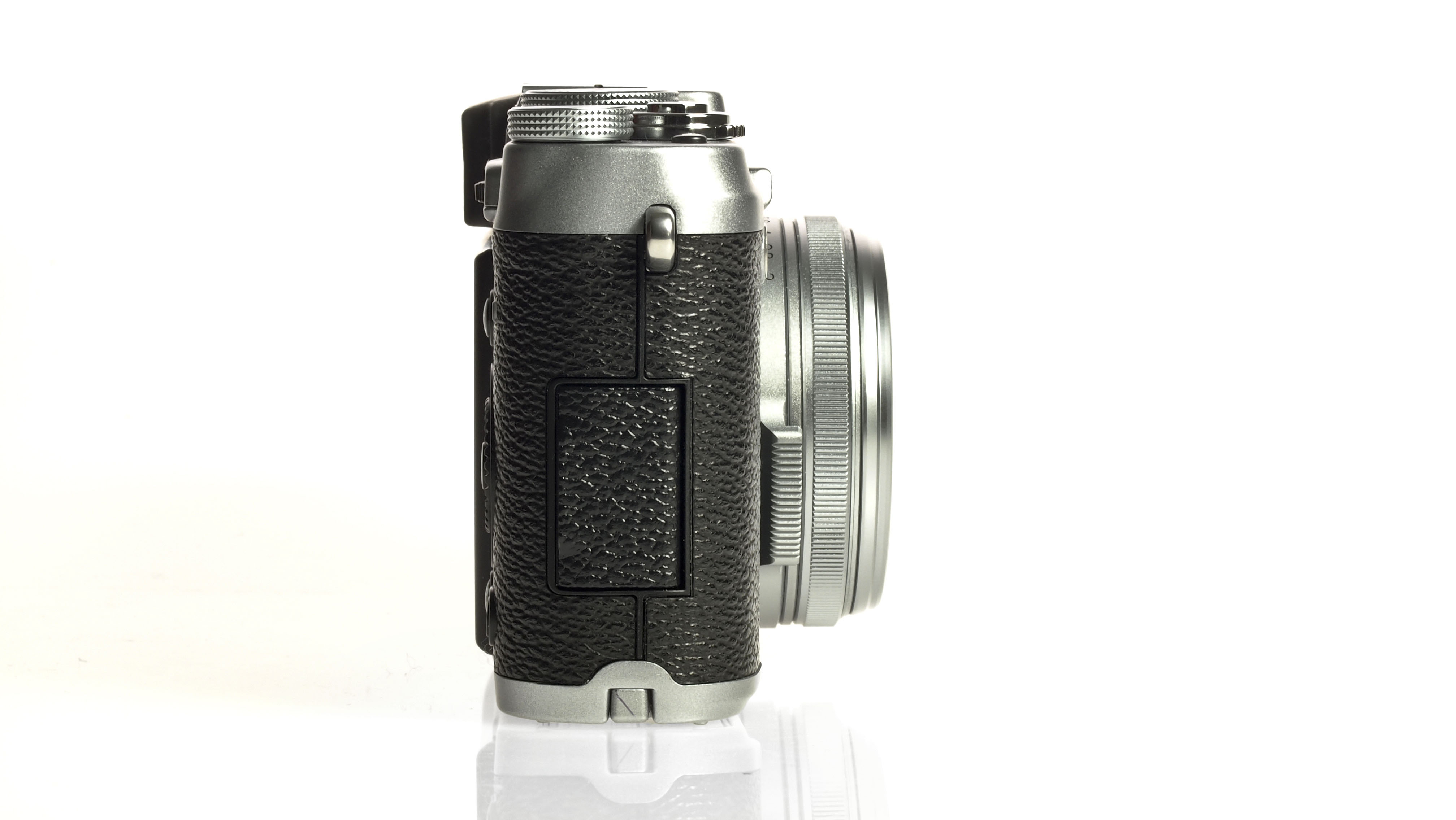Why you can trust TechRadar
Fuji has stuck with the same design for the Fuji X100S as it used for the Fuji X100. Consequently, the Fuji X100S is constructed from magnesium alloy and has a very high quality feel with retro styling.
Thanks to its textured coating and a shallow ridge on its front, there's just enough purchase to make it possible to carry the camera in your hand between shots rather than on a strap. A little more definition to the front grip and a thumb-ridge wouldn't go amiss, though.
Exposure is set using a shutter speed dial and aperture ring, with semi- and fully-automated control being possible by setting one or both to A. There's also an exposure compensation dial for quick adjustment by up to 2EV in either direction in 1/3 stops.
The button and control layout of the Fuji X100S is the same as the Fuji X100, but the raw button has been rebadged with a 'Q' and it gives access to the same type of Quick Menu as is found on the Fuji X-Pro1.

This is one of the best function or quick menu arrangements that we have come across, since features may be adjusted merely by navigating to them using the navigation controls and then using the dials to alter the settings. It would be nice to be able to customise the options made available in the Quick Menu, though, perhaps to provide quicker access to the advanced filters.
There are buttons to provide quick access to key features such as the flash, white balance, macro mode and drive options, and a Function (Fn) button on the top can be customised to access one of 15 options. We found it useful to access the sensitivity options.
With a minimum sensitivity of ISO 200 and a maximum aperture of f/2, it would be nice to have a fast route to the neutral density filter as well.
Sign up for breaking news, reviews, opinion, top tech deals, and more.
Like on many compact cameras, the Fuji X100S's AF point is selected by pressing a button and then using the navigation controls to find the desired point. This is alright but it would be nice to have a more direct route.

The rocker switch above the thumb rest on the back of the camera seems largely redundant, since its function is duplicated by the navigation controls and dial on the back of the camera. Perhaps for the update to the X100S, Fuji could replace this switch with a small joystick to select the AF point? Or maybe the screen could be touch-sensitive to enable speedy AF point selection?
Fuji has changed the shape of the lever that switches between the two viewfinder modes, but we didn't find it made a significant difference. Neither did we notice an appreciable difference to the viewfinder, which we are told has changed shape a little to avoid dust buildup.
While Fuji has given the optical viewfinder an overlay to display a collection of shooting parameters and the focus point, we prefer to use the 2,360,000-dot electronic viewfinder (EVF).
For a start this shows the image as it will be captured at the selected exposure and white balance settings, but it's also easier to see the framing of the shot with approximately 100% frame coverage.

There were a couple of instances where objects encroached into the edges of the frame but we missed it because of all the information that is displayed in the EVF - something to watch out for.
Thanks to its high dot count there's plenty of detail visible in the electronic viewfinder, and gradations look smooth and natural. Comparing this EVF with the earliest models that have given such viewfinders a dubious reputation among some photographers is like comparing CCTV footage with an HD movie. The technology has come a long way.
At its default brightness setting, the 2.8-inch 460,000-dot LCD screen provides a nice clear view of images even in quite bright light. But because the viewfinder is so good, it's only really necessary to use it to compose images when shooting from awkward angles.
However, when shooting outside it is hard to see the advanced filter text, so when selecting a filter it's best to look in the viewfinder.

Fuji has added two new manual focus assist options, Digital Split Image and Focus Peak Highlight. Selecting Digital Split Image renders the centre of the frame black and white and divides it into four bands. When the edges of the bands match up, the subject is sharp.
It works well, but we found the Focus Peak option easier to use in a range of situations. When this mode is selected, the highest contrast areas of the subject are edged in black and white when it is in focus.
While the Fuji X100S's menu is logically arranged, it's frustrating that there's no My Menu section to assign the most commonly used features to. Also, if the camera is turned off it doesn't remember the last feature accessed in the menu, so you can spend quite a bit of time navigating through the lists.
It's nice to see a quick and easy way of rating images in-camera, but it's rather odd that it's impossible to zoom into images to check sharpness in rating mode. We were also disappointed to discover that the star ratings aren't visible in Adobe Bridge and the like, which renders the system almost pointless.
